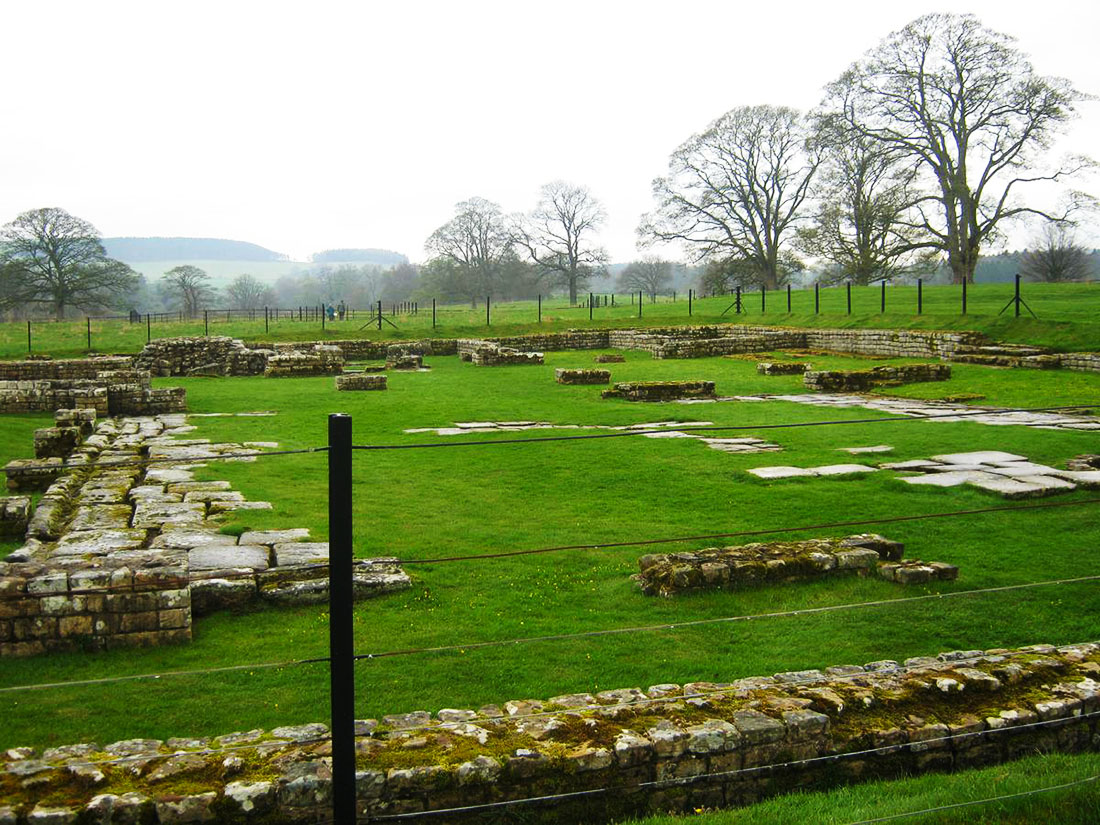Discovering Britain´s History:Chesters Roman Fort
1/23/2016
While traveling to various countries, I noticed that doesn´t matter where I go, it always gives me some lessons for my life. It can be something about lifestyle of other cultures, it can provide me information about past of a beautiful cathedral in some city or it can show me how to cook those yummy cookies. This time, I would like to share with you a story how I learned a small part of Scotland´s history without going to school and using my history book.
Imagine the situation - you are young teenager arriving to Scotland after long ride by bus, ferry and bus again. You are tired and when you finally made it to a first stop of our trip, almost everybody is catching some zzz´s by then. The bus makes a little yank while he is trying to park and your head lightly hit the "not so soft" and cold glass of bus window. After a short while of confusion trying to figure out what is actually going on, you look through the wet and foggy window. The view is not very lovely. Misty, rainy and cold morning is waiting for you right there. And after few seconds you hear your teacher:"Alright, put on some warm pieces of clothes, don´t forget your important belongings, such as wallet, phones or cameras and get out. We are waiting for you outside in 5 minutes." Are you in the picture? Fine, so come and join me in this history lesson.
Chesters was one of many forts added to Hadrian´s Wall soon after the Wall was first built. I would like to tell you a bit more about Hadrian´s Wall to avoid your blank stares while talking more about the fort´s history. Hadrian´s Wall was the most strongly defended frontier in the Roman Empire. It runs from the east coast of Northumbria to the west coast of Cumbria. The Wall was built in 122 AD and it consisted of mile castles, forts, ditches and vallum. The purpose is not very well known, because while some historics claim it was a way how to "protect" the Romans from possibly invasion or migration of barbarian tribes, others believe that it was supposed to show the power of the Romans. Neverthless, today, Hadrian´s Wall is one of the most popular tourist attraction and was designated as a World Heritage Site in 1987 as well.
The fort was probably built in 123-124 AD and it would have required 16 stable-barracks for 32 men with their horses. The Romans referred to Chesters as "Cilurnum." Research also shows that the fort was occupied for nearly three centuries and many of the troops based here were from countries such as Germany or Spain. Although there has been no excavation of the civilian settlements at Chesters, evidence from other forts in the north suggests that by the end of the third century, the fort would have been unused and abandoded. It is not very well known if something happened with the fort after fourth or fifth century and if somebody lived there. In 1796 Nathaniel Clayton bought the estate. He created a special park between his house and the river. His son, John Clayton, started doing several excavations in 1843 and thanks to him, we know very well how the buildings and the fort might have looked when it was occupied. In 1954, the site was placed in the guardianship of the Ministry of Works and now it is under English Heritage.
So this is at least a small history about the origin and usage of this fort. The interesting point is that most of the fort´s buildings and remains are actually still buried. But as you can see from the photos, you can clearly see what each building probably was and how the life look liked there. There is also very nice museum with many things which belonged to the Romans and there is a really wide range of these "treasures", so you can find there coins or dishes, but also remains of columns and their decoration. The site and museum are opened only on weekends until March. Then from April, they are opened on daily basis from 10am till 6pm. It is also closed on Christmas holidays and it might be closed on some other feasts throughout the year. The prices are following - £5.80 for adults, £3.40 for child(5-15 years), £5.20 for the elderly(over 60 years) and £15 for family(including 2 adults, 3 children) and if you become a special member of English Heritage club, it is free for you.
Have you ever visited Chesters Roman Fort? Did you learn anything special during your journey?

























0 comments